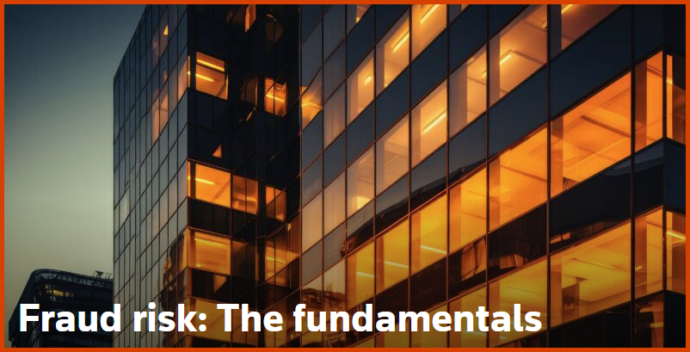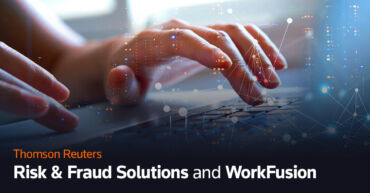Explore the process of uncovering deceit, identifying perpetrators, and mitigating losses for organizational integrity and security.
This blog is part of the “Fraud Risk” series.
Jump to:
| What is fraud investigation? |
| Why is fraud investigation important? |
| Understanding how to investigate fraud |
| Finishing the process |
How could this have happened? That’s what numerous organizations, whether private or public sector, have asked themselves when they discover they’ve been hit by fraud. That element of shock and surprise is just one of the ways a “fraud event” can disrupt and even damage an organization.
As we noted in a previous post about fraud detection, vigilance about detecting potential fraud is crucial to an organization’s effective functioning. Organizations of all kinds and sizes can be victims of fraud. And the dangers are likely to continue and even grow. To get a sense of how fraudulent activity and scams are exploding, consider some statistics on digital fraud from a 2023 report released by credit agency TransUnion:
- Fraudulent digital transactions rose 122% in the U.S. from 2019 to 2022.
- During that same period, identity theft increased by 81%.
- Financial services firms experienced a 44% increase in fraud attempts.
An organization uses the process and digital tools of fraud investigation to make sure it has indeed occurred, and if it has, who committed the fraud and how it was committed. This can help the organization manage and mitigate the fraud’s impact. It can also help it establish strategies and protocols for preventing future fraud.
What is fraud investigation?
Fraud investigation is about conducting thorough inquiries and examinations into suspected fraudulent activities to gather evidence, identify perpetrators, determine the extent of losses, and support potential legal action or disciplinary measures.
Investigation refers to activities an organization pursues after it has detected suspicious behaviors. Fraud investigation typically requires a deep, targeted look at financial records and databases, as well as poring through records of individuals and outside companies.
Fraud detection is the third of the three fundamentals—prevention, detection, and investigation–of fraud risk management. Fraud risk refers to the possibility of financial or other losses (such as company and customer data) due to deception perpetrated by an individual or a group either inside or outside the organization.
What is fraud investigation important?
Fraud schemes can damage just about any kind of organization. Financial losses can be particularly crushing for smaller companies. In addition, fraudulent activity can put certain types of businesses (such as law enforcement with criminal investigations) out of compliance with industry regulations, resulting in financially costly consequences. Then there are the less quantifiable but potentially significant costs of damage to a company’s reputation.
All this means that organizations need to be able to manage fraud risk. Risk management is the process of identifying, assessing, and controlling potential risks or uncertainties that could negatively impact its objectives or finances. Fraud risk assessments seeks to prevent fraud before it can occur. Again, not all fraud can be prevented. That’s when fraud detection and fraud investigation come into play.
Benefits of fraud investigation
Investigating types of fraud can help organizations reduce future financial losses and other negative impacts caused by fraudulent activity. In addition, it can help them prevent future fraud by revealing where it might be vulnerable to fraudulent activity.
Challenges of fraud investigation
Fraud investigation isn’t a simple undertaking. Some main reasons why:
- The need to be cautious and judicious. When business leaders discover that a fraud might have taken place, they’ll understandably be tempted to take immediate action. That would be the wrong approach. It’s essential to take the time to investigate carefully and make sure that the apparent perpetrator—whether employee or trusted outsider, such as a vendor—is truly guilty. A careful, discreet, well-documented investigation also can uncover weaknesses in the company’s risk management that it needs to fix.
- Careful investigations consume time and resources. Given the painstaking efforts a fraud investigation requires, there’s no way to do so cheaply.
- Fraud is constantly evolving. While some forms of fraud are relatively easy to investigate, fraudsters are continually developing new ways to outwit an organization’s defenses. This makes investigation more complicated—and even more crucial.
 | Risk, fraud, and investigations solutions Know today’s risk and navigate tomorrow’s challenges |
Understanding how to investigate fraud
Before starting a full-blown fraud investigation, the organization should determine whether there is sufficient evidence to prove that fraud was committed. Are there enough records and other data revealing a “trail” of fraudulent activity? This data may include emails, transaction logs, bookkeeping journal entries, text messages, and any other documents, whether digital or hard copy, that might shed light on possible fraud. Data may also include interviews with employees who might be involved in or have knowledge of the apparent fraud.
Fraud investigation may also require identity verification. Many fraudsters in fraud cases use fictitious or stolen identities to hide their activities. This is a particular concern for government agencies, insurers, and healthcare providers that can be victimized by benefits fraud.
Fraud investigation is likely to require outside expertise. An organization may need to consult an attorney specializing in HR or labor relations so that it is properly “handling” suspected employees. Outside forensic accountants can dig through complicated masses of financial information (bank fraud, credit card fraud, and other financial crimes) and conduct interviews of employees.
Fraud investigation also requires thorough documentation, not only of the data and other evidence but of every step in the investigation process. All potential evidence should be gathered and protected, and all relevant electronic data secured and stored. Digital tools developed specifically for these purposes can allow investigators to locate hard-to-find information on fraud and fraudsters, adding a greater level of rigor and comprehensiveness. These tasks can better identify patterns and hidden connections that could reveal fraudulent activity over a period of time. Such tools also can verify the reliability of data. An organization needs to be absolutely certain not only that fraud has been committed but that it is correctly identifying the person or persons responsible.
Why does fraud occur?
The answer might seem simple: People commit fraud because they’re greedy or financially desperate. But that doesn’t explain why many avaricious or financially strapped individuals don’t engage in fraud.
A fuller explanation is provided by what’s called the fraud triangle. The fraud triangle is a model that’s used to describe the three elements that, when combined, are likely to cause someone to commit fraud. Effective fraud risk management requires an understanding of the fraudster mindset.
Side 1: Pressure (or motive)
A great deal of fraud is driven by greed or financial difficulty, such as gambling debts or overspending. But sometimes the motivation isn’t that simple. People have committed fraud under pressure from a romantic interest (whom they may never have met) or a family member. Others may be blackmailed or otherwise pressured to commit fraud.
Side 2: Opportunity
The fraudster needs access to money. In many cases, he or she oversees an organization’s funds as an accountant or a bookkeeper. That person typically writes checks and maintains the entity’s financial records. Such a person probably may not be closely overseen. He or she may also have a sterling work record.
Side 3: Rationalization
Individuals who commit fraud typically don’t think of themselves as “bad people.” Perhaps they tell themselves that they’ll pay it back just as soon as they can. Or they might justify it by convincing themselves that other people in the organization dip into the till from time to time. They rationalize it in other ways: A Colorado pastor who recently admitted that he defrauded his church community of more than $1 million said that part of the money was used for “a home remodel the Lord told us to do.”
Understanding the reasons why fraud happens can help an organization target its fraud investigation work. It can also provide guidance for preventing and detecting fraud by making it aware of potential red flags that might signal fraudulent activity, such as employees who appear to be living above their means (can he or she really afford that Miata?) or executives who are less than transparent about certain expenditures.
Finishing the process
Once the organization concludes a fraud investigation and shares its findings with appropriate stakeholders, it should assess any impacts to its operations, financial well-being, and reputation. It will then need to repair any damage the fraudulent activity may have caused.
An investigation should also reveal how the organization can strengthen its fraud prevention efforts. For instance, it can review any internal controls it has in place and see where they can be reinforced. For instance, it may need to conduct more frequent audits or update its cybersecurity protocols.
In any case, every organization needs to continually strengthen its fraud risk management, particularly given new or growing fraud threats, including:
- Synthetic identity fraud. Digital technology is enabling individuals and fraud gangs to create fake identities using real Social Security numbers or other stolen personal data. This can make fraud investigation more onerous.
- Use of artificial intelligence. AI could allow fraudsters to complicate fraud by convincingly disguise themselves on digital platforms as colleagues, managers, customers, clients, or C-suite executives. They can then get credulous employees to reveal sensitive data or provide access to company financial accounts. That noted, AI and machine learning can also help safeguard organizations by detecting and investigating fraudulent activity.
- Fraud is global—and organized. Fraudsters worldwide are increasingly leveraging the borderless nature of the internet to collaborate with global gangs to steal funds, data, and identities.
In short, fraud will always be a dangerous risk. As it morphs into dangerous new forms, organizations will need to undertake fraud investigations with rigor, and with the help of the appropriate digital technology. Begin the process of risk management to combat fraud risk.
 | Risk management: The framework Navigate the dynamic landscape, covering steps for effective resilience |












